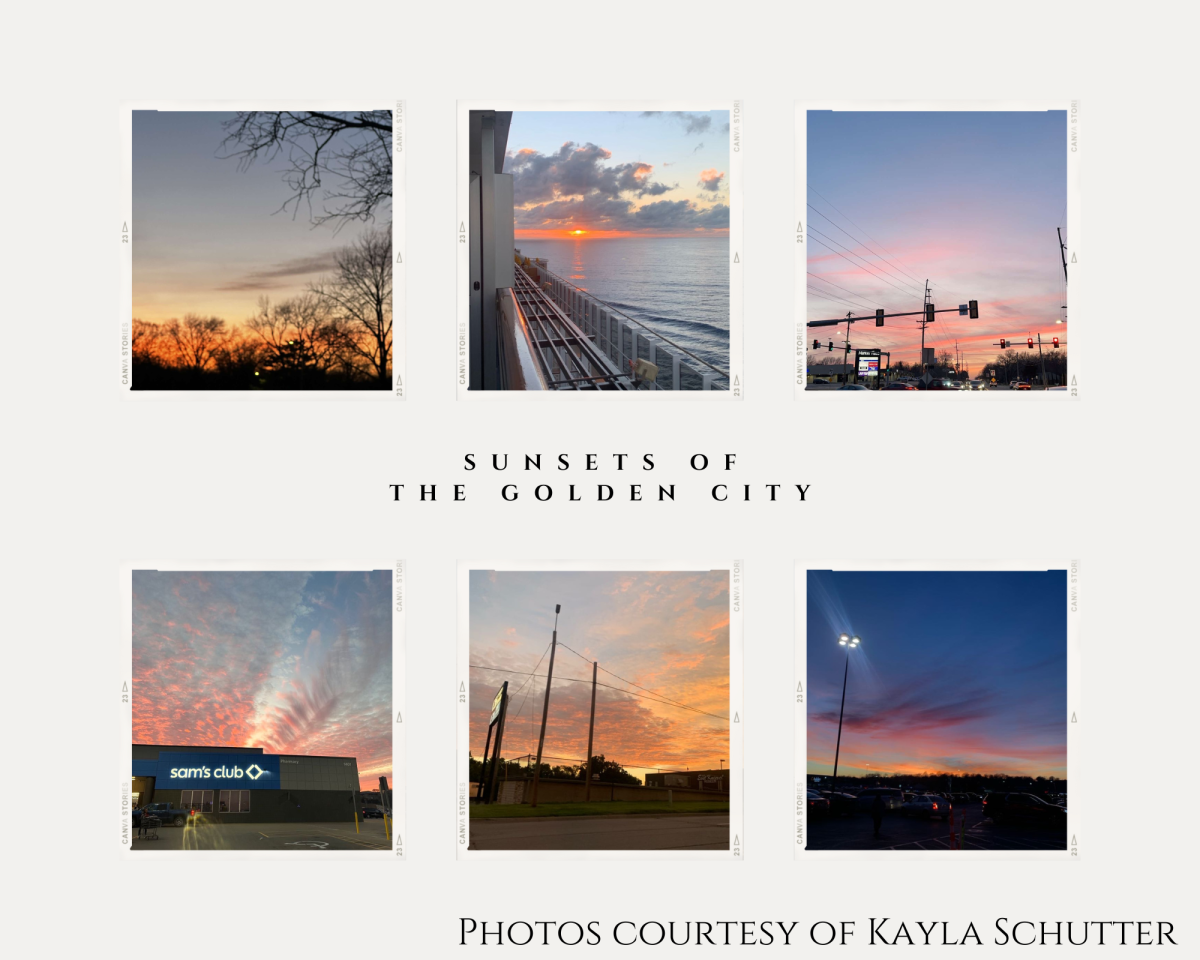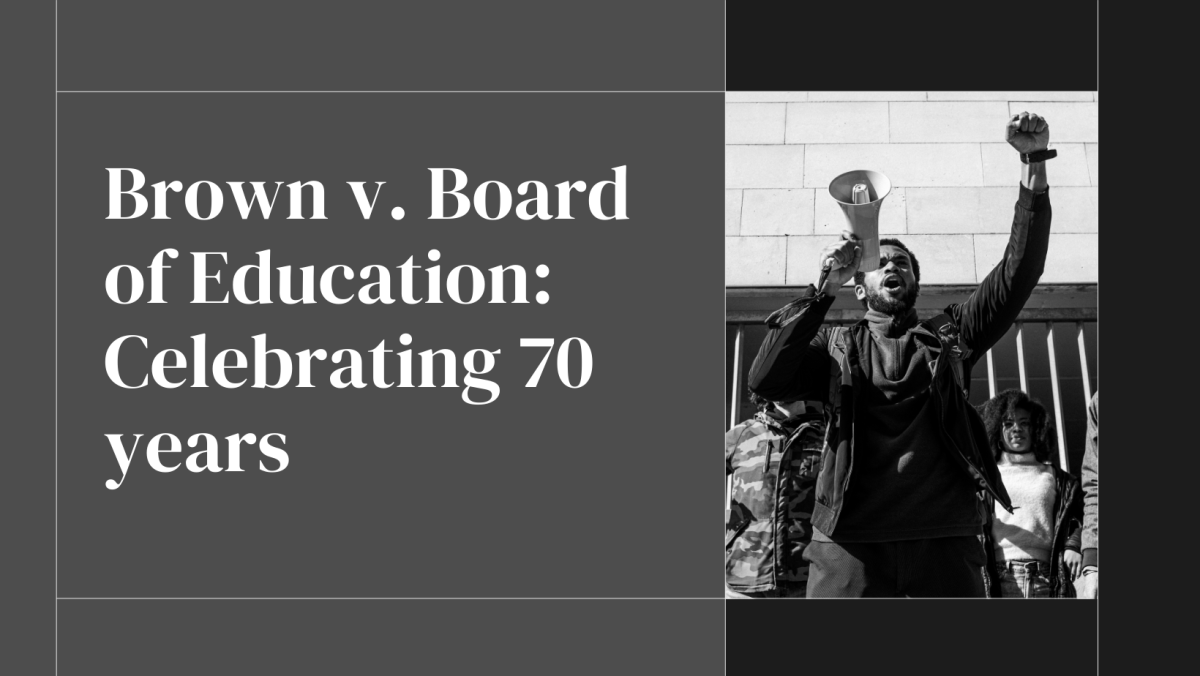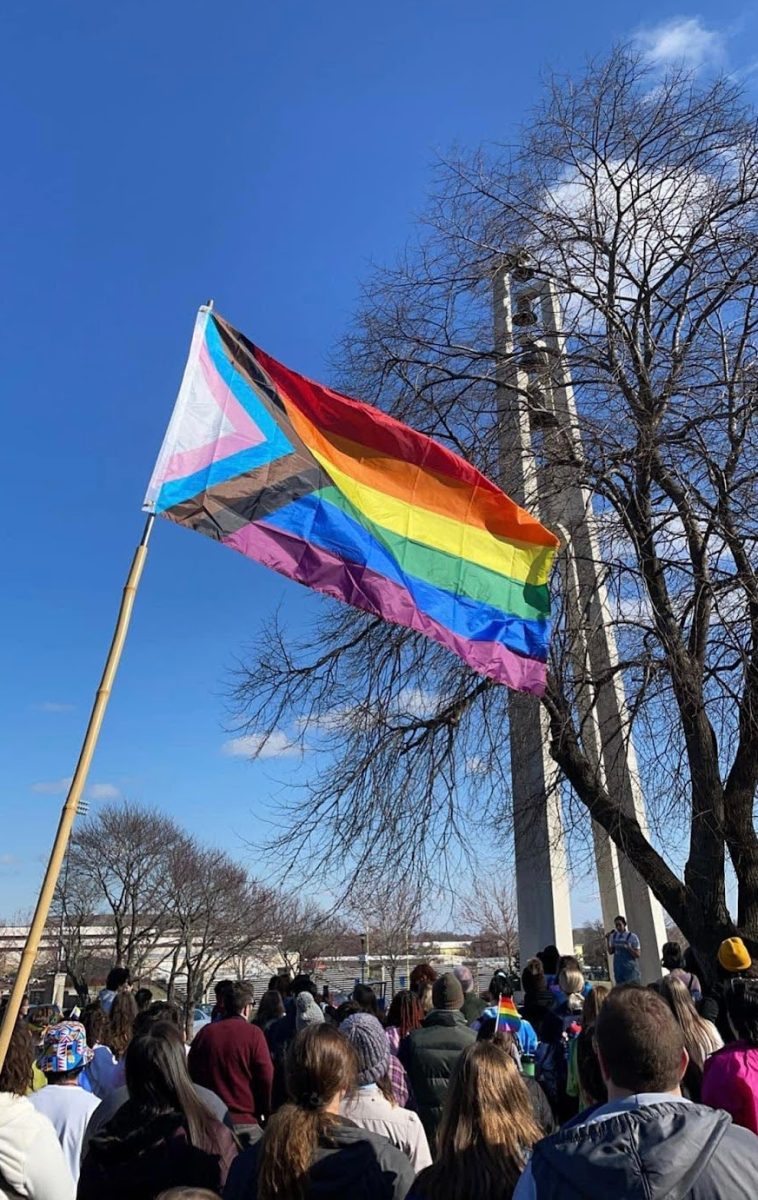Kansas’ capital city is home to much of the state’s history. Even though Topeka is nearing its 170th birthday, there is still more to learn about the early days of the Golden City.
Topeka was founded by a group of nine men who were all opponents of slavery. Their goal was to establish Topeka as a “free-state” community. On Dec. 5, 1854, Topeka was named an official town in support of the abolition of slavery, according to an article published Dec. 4, 2019, by the Topeka Capital Journal.
“Its official founding gave it … legitimacy,” Katie Keckeisen, the local history librarian at the Topeka Shawnee County Public Library, said. “They were able to draw more people and draw more business. The city kind of had a little explosion of people when it became a town because … it wasn’t going to just be a flash in the pan.”
Thanks to digitized newspaper archives and the TSCPL, there is a story hidden in history that explains how Topeka received its nickname the “Golden City.”
Topeka got its name from the indigenous word, pronounced “doe-peka,” that means “a good place for potatoes.”
“This guy named Thomas Say said that the Indian name for [the Kansas River] was ‘good potato river,’ in his list of Indian words,” Keckeisen said. “That’s because the river was a great place to grow and find wild potatoes.”
While the origins of its official name are indisputable, its nickname has a few stories attached to its meaning. Some say the name comes from the light that shines off the copper dome of the Capitol during a sunset. However, the term “Golden City” was used much earlier than that.
Published in 1890, “Topeka Pen and Camera Sketches” by Miss Mary E Jackson uses the first instance of the term “Golden City” as one of its chapter titles. This first excerpt from it describes the natural beauty of the land.

“Through autumn’s blue veil the sun poured his rays down upon the beautiful hills and valleys of Kansas. Those rays of the sun were of a dark golden, or red. … And as the sun was slowly sinking behind the hills and vast undulating prairies, a grander and more glorious sight appeared before the vision of a few men … a sparkling gem, dazzling their eyes with its brilliance.”
The section goes on for a little longer, describing a group of Pottawatomie Indians walking to a high crest of Topeka. The next vision describes the beauty of the sky that is beyond the city.
“At the outskirts could be distinguished a few dwellings, but they too were transformed into spears of radiant light. Those radiant lights flickered, wavered, grew higher, and seemingly outshone the rays of the sun. They were a pale blue, vanishing into dark red. The ray of beautiful pearls gleamed for a moment, then leaped in its stead the rainbow arch. Shafts of light reaching the sky arose, then rested upon the earth. A snowy whiteness, a shade of crimson, losing itself in the brightest lines of amber, intermingled with roseate hues. A blaze of the brightest sunlight, and all that vision of beauty disappeared.”
The chapter carries on with the story of the Pottawatomie group as they watch the sun set and the stars begin to dance into the sky and ends with this:
“To them it was new, and believing the Great Spirit had come to bless the inhabitants of the golden city, and they invoked that Spirit to bless again the thousands and white men and their families dwelling here in their capital city.”
Just like the residents of early Topeka, current residents also enjoy the sights of Kansas’ sky.
“There’s nothing like Kansas sunsets,” Kayla Schutter, Topeka resident, said. “I just love the bright colors and how it always reminds me of home.”
Even though the term “Golden Sky” was not used until 1890, the vibrant colors of Kansas’ sky was depicted in newspapers long before that.
From the Jan. 3, 1855, edition of the Kansas Free State news publication, an account titled “Will Kansas be a Free State?” depicts the story of a man traveling through Topeka to get to Lawrence in December of 1854. But it is this account, taken after a ride on the prairie, that details the natural sight of the city.
“… the prospect from this high point of land is truly surpassingly beautiful. The sun was just making his appearance above the distant horizon, adding hues of beauty to the scenery before us, tipping with its golden rays of light the hill-tops in the southern horizon.
…we are apt to think that Kansas is the most picturesque and salubrious region in the world. To the west we hold a beautiful undulating prairie, and we look upon it as a vast Ocean until the Heavens shut in our vision.”
Kansas is home to some of the most beautiful sunsets in the country, and it is these accounts that showcase the inspiration for the city’s nickname. But there is more to this than just reading about the beauty of the land. It is important to understand the history of Topeka and Kansas as residents of the state, whether temporary or permanent.
“You have to know where you’ve been to know where you’re going,” Keckeisen said. “A lot of people think ‘Oh it’s Kansas, it’s nothing, it’s flyover country,’ … but I think it’s very important, because there is so much that has started here.”
Topeka has been the home to monumental moments in U.S. history and will always be home to thousands of Kansas residents.
“My dad always said this … and I really have taken up saying it,” Keckeisen said. “So many people say ‘Oh, Kansas is boring, it was the place in the Wizard of Oz that is all black and white,’ and yeah, that’s right, but where did Dorothy spend the entire movie trying to get back to?”
Edited by Stuti Khadka and Jayme Thompson












Debi Feyh • Apr 11, 2024 at 2:11 pm
Great article! I have lived here almost all my life and didn’t know this history. Thanks For sharing!